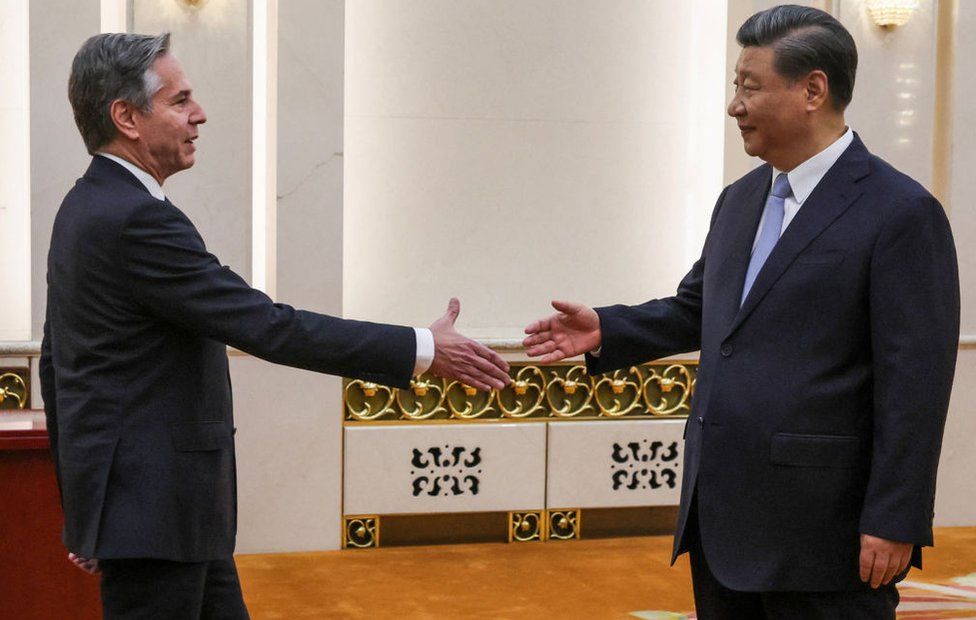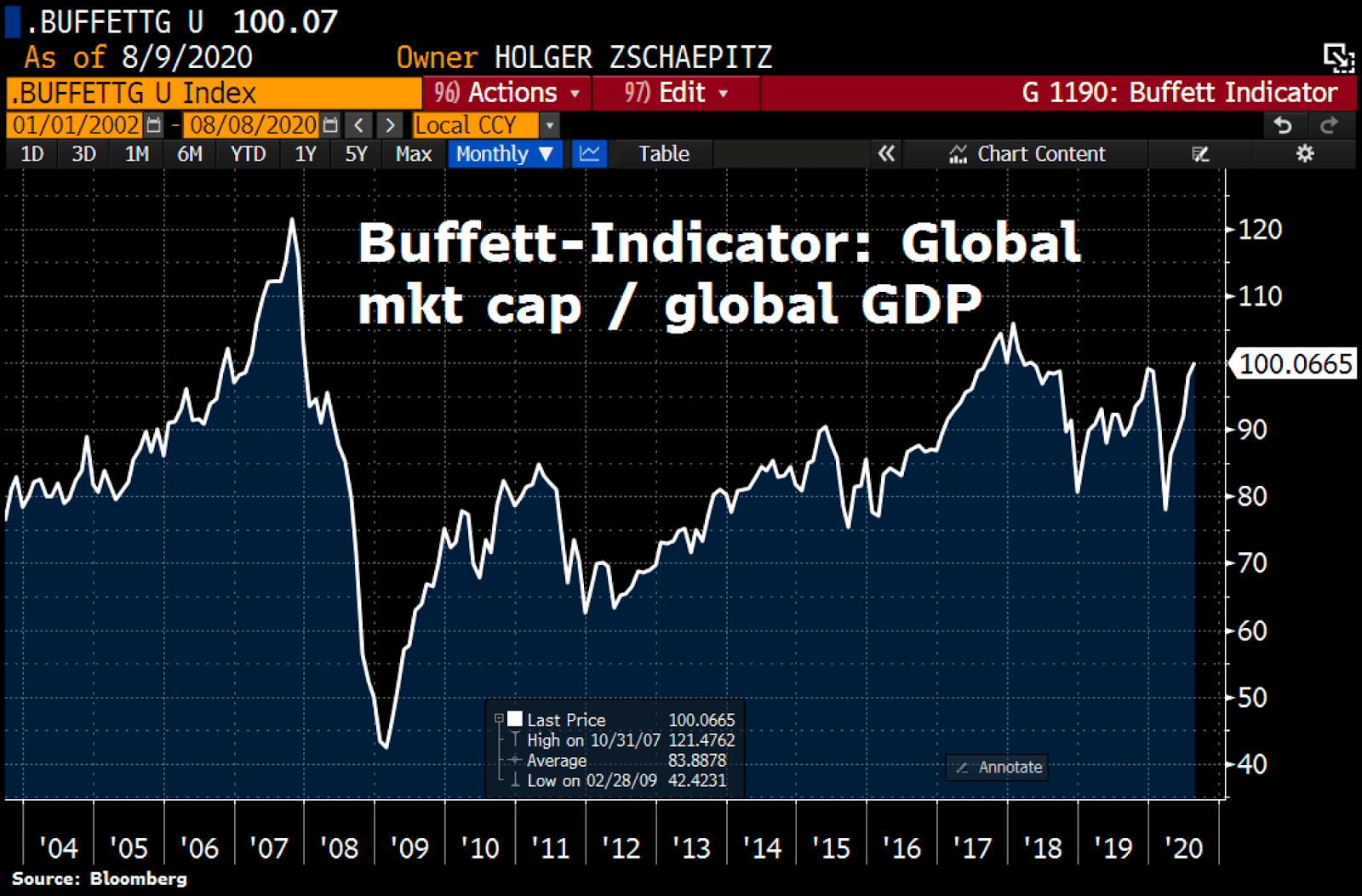Who Blinked First? Resolving The US-China Trade Standoff

Table of Contents
The Escalation of Tensions: From Tariffs to Trade Wars
The US-China trade dispute didn't erupt overnight. It was a gradual escalation fueled by long-standing trade imbalances, accusations of intellectual property theft, and differing views on fair trade practices. Key moments included the imposition of tariffs on steel and aluminum, initially presented as national security measures, which triggered retaliatory actions from China. This marked the beginning of a tit-for-tat exchange of trade restrictions, significantly impacting various industries in both countries.
The accusations of intellectual property theft by Chinese companies played a significant role in escalating the conflict. The US argued that these practices undermined American innovation and competitiveness, justifying punitive trade measures. China, in turn, countered with accusations of unfair trade practices by the US.
- Specific examples of tariffs:
- US imposed tariffs on $34 billion worth of Chinese goods in July 2018.
- China retaliated with tariffs on similar value US goods.
- Subsequent rounds saw tariffs imposed on hundreds of billions of dollars worth of goods on both sides.
- Economic impact: The tariffs led to increased prices for consumers, disrupted supply chains, and negatively impacted economic growth in both countries. Estimates of the cost varied widely, depending on the model used.
Negotiating the Truce: Key Players and Strategies
The negotiations to resolve the US-China trade war involved high-level officials from both governments. Key players included Robert Lighthizer (US Trade Representative) and Steven Mnuchin (US Treasury Secretary) for the US, and Liu He (Vice Premier of the State Council) for China.
Negotiation strategies involved a complex interplay of compromise and contention. Both sides employed a mix of hardline stances and attempts at compromise, seeking to achieve their economic and strategic goals. International pressure, including concerns about the global economic slowdown, played a significant role in pushing both sides towards a resolution.
- Specific concessions: The "Phase One" trade deal involved China committing to purchasing a significant amount of US agricultural products and reducing certain tariffs. The US, in turn, reduced some existing tariffs.
- Significant meetings and agreements: Multiple rounds of high-level talks took place in various locations, culminating in the signing of the "Phase One" trade deal in January 2020. Further negotiations on a more comprehensive deal remained elusive.
Assessing the Outcomes: Winners and Losers
The US-China trade war's impact was multifaceted. While the "Phase One" deal offered some short-term relief, the long-term effects are still being assessed. The immediate consequences included disruptions to global supply chains, increased consumer prices, and slower economic growth in both countries. Specific industries, like agriculture and manufacturing, experienced significant impacts depending on the nature and extent of the tariffs imposed.
- Economic consequences: Studies showed that the tariffs reduced global trade and GDP growth, with varying impacts on the US and China. Some sectors in the US benefited from increased domestic demand while others suffered from reduced exports. China faced challenges from decreased exports and internal economic adjustments.
- Impact on consumer prices: Tariffs increased prices for consumers in both countries, affecting purchasing power and overall consumer confidence.
Who Blinked First? Analyzing the Concessions
Determining who "blinked first" is complex. Both sides made concessions, but their relative significance is a matter of interpretation. China's commitment to purchasing increased amounts of US goods was a substantial concession, impacting its domestic market and economic planning. The US's reduction of tariffs, while significant in terms of trade volume, might be viewed as a less consequential concession strategically.
- Comparative analysis of concessions: The economic value and strategic implications of each side's concessions require in-depth analysis considering the long-term consequences of policy shifts. This is beyond the scope of this article.
Conclusion:
The US-China trade standoff was a complex and consequential event. It involved a significant escalation of trade tensions, followed by a protracted negotiation process that resulted in a partial agreement. Determining who conceded more is subjective and requires a nuanced understanding of the long-term economic and strategic implications of each side's moves. Understanding the intricacies of the US-China trade war provides valuable insight into international relations and economic diplomacy. Further research into specific aspects of the US-China trade war and its resolution can offer a deeper understanding of global economic dynamics. Continue exploring the ongoing impacts of this pivotal trade deal to fully grasp its lasting effects.

Featured Posts
-
 Bim Aktueel Ueruen Katalogu 25 26 Subat Indirimli Ueruenler
May 15, 2025
Bim Aktueel Ueruen Katalogu 25 26 Subat Indirimli Ueruenler
May 15, 2025 -
 Latest Mls Injury Report Impact On Saturdays Matches
May 15, 2025
Latest Mls Injury Report Impact On Saturdays Matches
May 15, 2025 -
 Bof A On Stock Market Valuations Reasons For Investor Optimism
May 15, 2025
Bof A On Stock Market Valuations Reasons For Investor Optimism
May 15, 2025 -
 Fighting For Fairness Transgender Military Members Discharge Battle
May 15, 2025
Fighting For Fairness Transgender Military Members Discharge Battle
May 15, 2025 -
 Is Creatine Right For Me A Guide To Creatine Supplementation
May 15, 2025
Is Creatine Right For Me A Guide To Creatine Supplementation
May 15, 2025
